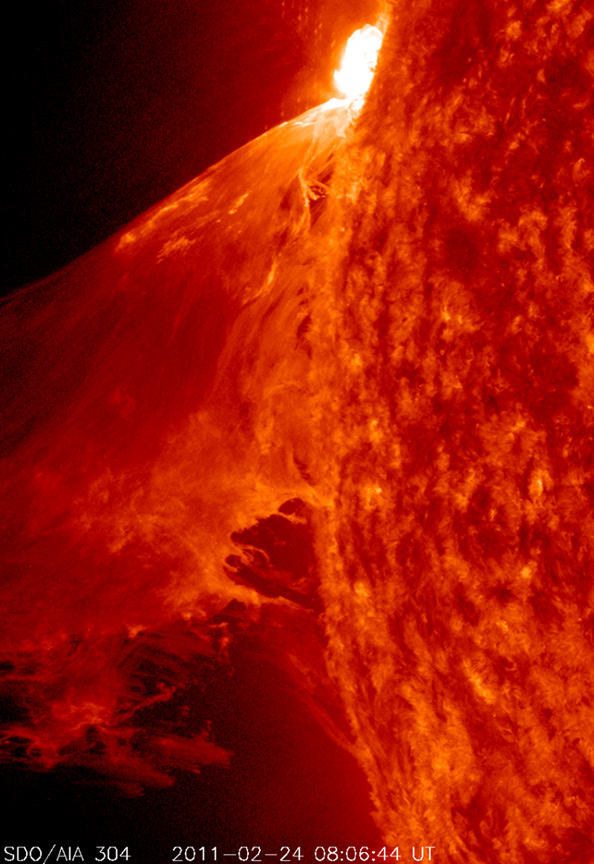Science News
Preparing for Solar Storms
February 28, 2011

We survived last week’s SnO.M.G., but how can we be better prepared for the next solar storm?
An international panel, speaking about solar storms at the recent AAAS Meeting, began their presentation by saying, “Don’t panic.”
Despite the fact that the sun is increasing its activity and will enter the solar maximum in 2013, space weather technology and satellites are improving so that solar storms will be easier to predict and prepare for.
Sunspots appear leading to and during the solar maximum and can erupt into solar flares or coronal mass ejections that can cause geomagnetic storms here on Earth-- affecting radio communications, GPS signals, and radar systems. They can even knock out power grids and destroy satellites.
There are eleven space weather centers around the world that track these storms. These centers originated in the 1940s, during World War II. They provide an early warning system of coming storms to governments, airlines, power companies, cellphone providers and other clients. Similar to hurricanes and other Earth-originated storms, they have a measuring system to track the severity of solar storms. You can see the categories here.
With the STEREO satellites and SDO now constantly watching the sun, storms can be tracked across its entire globe, giving the space weather centers a head start. Depending on the type of storm, it can take hours or days for the effects to reach Earth.
Two weeks ago, a large solar flare captured by SDO allowed scientists to warn airlines to re-route flights away from the poles, where the effects are felt most. SDO also captured an amazing flare last Thursday. Since the flare occurred away from Earth, no storms will reach us currently. However as sunspot 1163 (the origination of the flare) turns towards Earth, we could get hit, according to SpaceWeather.com.
NOAA, working with FEMA and other government agencies, is getting better at modeling possible severe solar storm scenarios and trying to, through conferences like these, raise awareness, not incite panic.
Image: SDO/NASA